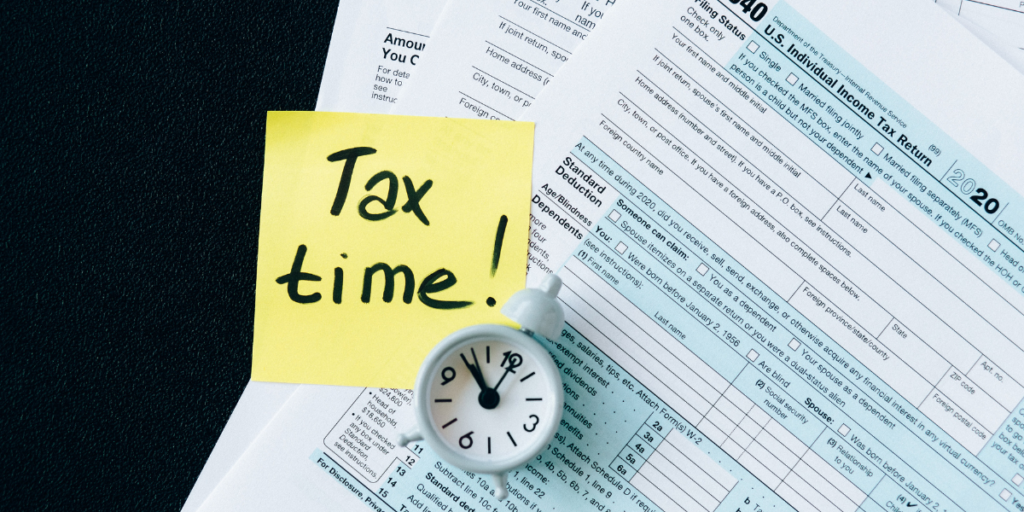If you’ve ever wondered whether you need to file FBAR, Form 8938, or both, you’re not alone. It’s one of the great rites of passage for U.S. expats: realizing that the IRS and FinCEN both want a peek at your foreign accounts—but through entirely different lenses.
Both forms exist to catch unreported foreign financial assets, but they’re filed with different agencies, follow different rules, and carry their own not-so-charming penalties if ignored.
Whether you’re tracking foreign bank accounts, mutual funds, stocks, or even that dusty life insurance policy you forgot you signed, here’s how to figure out what to file—and how to avoid getting it wrong.
📋 Key Updates for 2025
- The IRS has expanded foreign asset audits, especially for taxpayers reporting high total values across multiple accounts.
- More financial institutions worldwide are flagging U.S. persons during onboarding under stricter FATCA and CRS protocols.
- Streamlined Filing Procedures now require more detailed evidence of non-willfulness, slowing down approval timelines.
What is FBAR (FinCEN Form 114)?
If you’ve got foreign bank accounts and more than $10,000 passed through them in a given year—even briefly—congrats: you may owe the U.S. government a Foreign Bank Account Report. It’s called FinCEN Form 114, it’s part of the Bank Secrecy Act, and it’s enforced not by the IRS, but by FinCEN—a government agency with a name that sounds like a Jason Bourne sequel.
Here’s what triggers FBAR reporting:
- You’re a U.S. person (citizen, resident, or entity), and
- The aggregate value of your foreign financial accounts exceeded $10,000 at any time during the calendar year
This includes not just bank accounts, but also:
- Brokerage accounts overseas
- Some foreign retirement accounts and life insurance with cash value
- Any account where you have signature authority, even if it’s not technically yours
And no, it’s not filed with your tax return. The FBAR has its own digital home: the BSA E-Filing System, run by FinCEN (Financial Crimes Enforcement Network), not the IRS. (Because apparently we all needed another portal in our lives.)
💡 Pro Tip:
The $10,000 threshold isn’t per account—it’s total. Hit that number across all accounts combined (in U.S. dollars, based on the last day of the tax year), and you’re in FBAR territory.
What is Form 8938 (Statement of Specified Foreign Financial Assets)?
If FBAR is the U.S. government whispering “We see you” to your foreign bank accounts, Form 8938 is the IRS pulling up a chair and asking for the full portfolio.
Filed as part of your annual tax return, Form 8938 is a key piece of FATCA—the Foreign Account Tax Compliance Act. It’s required if you’re a U.S. taxpayer with foreign financial assets above a certain reporting threshold, which varies based on your filing status and whether you live in the U.S. or abroad.
So what needs to be reported? It’s more than just bank accounts:
- Foreign corporations, partnerships, and trusts
- Mutual funds and stocks held outside the U.S.
- Certain real estate—but only if it’s held through a foreign entity
- And other income-producing assets not captured under FBAR
Unlike FBAR, which is submitted separately, Form 8938 gets attached directly to your IRS Form 1040. And while the two forms sometimes overlap, Form 8938 often goes further—especially when it comes to ownership in foreign entities or investments tied to foreign financial institutions.
💡 Pro Tip:
Think of FBAR as where your money is, and Form 8938 as what your money is doing. When in doubt, a tax professional can help you figure out which applies—and help you avoid duplicate reporting or missed forms.
Filing requirements and reporting thresholds: Do you meet the criteria?
The million-dollar question (sometimes literally): Do you actually need to file? Here’s where FBAR and Form 8938 draw the line—using different rulers.
FBAR filing requirements
You must file an FBAR if:
- You’re a U.S. person (citizen, resident alien, or qualifying entity), and
- The maximum value of all your foreign financial accounts combined exceeded $10,000 at any point during the calendar year
This includes bank accounts, brokerage accounts, and anything else reportable—even if the money only sat there for a single day.
Form 8938 filing thresholds
The IRS ups the ante for Form 8938, depending on your filing status and where you live:
- Single (U.S.-based): $50,000 at year-end or $75,000 at any point
- Married filing jointly (U.S.-based): $100,000 at year-end or $150,000 at any point
- Single (living abroad): $200,000 at year-end or $300,000 at any point
- Married filing jointly (abroad): $400,000 at year-end or $600,000 at any point
And what about everyone else?
Not everyone who holds foreign assets qualifies as a filer. Nonresident aliens typically don’t file unless they meet specific criteria under U.S. tax law. Meanwhile, U.S. citizens and green card holders abroad are generally subject to both FBAR and FATCA reporting rules.
💡 Pro Tip:
These thresholds apply to the aggregate value of your accounts—not per account. And yes, you’ll need to convert everything to U.S. dollars using the year-end exchange rate.
File Form 114 or 8938—or both?
Here’s the catch: FBAR and Form 8938 don’t cancel each other out. If you’re a U.S. taxpayer with foreign financial accounts, there’s a good chance you’ll need to file both.
For example, you may need both if you have:
- A foreign bank account that held over $10,000 at any time during the year
- That same account includes mutual funds, foreign stocks, or other investment products
- Your aggregate foreign asset value exceeds the Form 8938 threshold based on your filing status and where you live
FBAR captures the account itself; Form 8938 digs into the assets inside—especially if they’re tied to foreign entities or income-producing investments.
The two forms have different reporting requirements, filing thresholds, and enforcement arms. FBAR goes to FinCEN; Form 8938 goes to the IRS as part of your federal tax return. And ignoring either? Not recommended if you enjoy sleeping soundly.
Key differences: FBAR vs 8938
FBAR and Form 8938 may seem similar, but they play by different rules. Here’s how they compare:
- Filing agency: FBAR is submitted to FinCEN; Form 8938 goes to the IRS.
- Where it’s filed: FBAR is filed online through the BSA E-Filing System; Form 8938 is attached to your annual tax return (Form 1040).
- Who must file: FBAR applies to U.S. persons and some domestic entities; Form 8938 applies to U.S. taxpayers who meet specific thresholds based on filing status and residency.
- Types of accounts covered: FBAR focuses on foreign bank and financial accounts; Form 8938 covers a broader range of foreign assets, including mutual funds, life insurance, and foreign stocks.
- Penalties for non-compliance: FBAR violations can lead to serious civil and criminal penalties; Form 8938 penalties start at $10,000 and escalate with continued non-filing.
Penalties for non-compliance
Missing FBAR or Form 8938 reporting isn’t just an administrative oversight—it’s a legal issue that can escalate quickly.
- FBAR penalties start at $10,000 per violation for non-willful failure to file. If the IRS believes you willfully avoided reporting, the fines can hit $100,000 or 50% of the account balance, whichever is greater, per year.
- Form 8938 penalties begin with a $10,000 fine for failure to file, with an additional $10,000 per month (up to $50,000) if the form remains missing after IRS notices. Criminal penalties may apply in cases of willful avoidance.
- Beyond monetary fines, both forms can trigger IRS scrutiny of foreign income, foreign corporations or partnerships, and any inconsistencies in your returns.
The good news? If your mistake was non-willful, the IRS offers a way to fix it. The Streamlined Filing Compliance Procedures allow eligible taxpayers to catch up on missed foreign asset reporting—often without penalties. But you have to file before the IRS comes knocking. Once you’re under audit or investigation, the opportunity closes.
💡 Pro Tip:
If you haven’t filed FBAR or Form 8938, don’t guess your way through catch-up. The IRS is much more forgiving when you come forward with expert help than when they discover it on their own.
When and how to file each form
Timing matters—and so does filing with the right agency.
- FBAR (FinCEN Form 114) is due by April 15, but there’s an automatic extension to October 15—no need to request it. It’s filed electronically through the BSA E-Filing System, not with your tax return.
- Form 8938 (Statement of Specified Foreign Financial Assets) is filed with your federal income tax return—typically April 15, unless you’ve filed for an extension. It gets attached directly to your Form 1040 and submitted to the IRS.
Even though the two forms sometimes report overlapping information, you must file them separately, and each has its own rules, filing system, and consequences for missing the deadline.
💡 Pro Tip:
Confused by dual reporting rules? You’re not alone—and getting it wrong can be expensive. A cross-border tax expert or CPA can help you file precisely, not painfully.
Don’t risk double trouble
FBAR and Form 8938 may cover similar ground, but the IRS and FinCEN aren’t comparing notes for your benefit. Miss one, and you could face steep penalties—even if you filed the other perfectly.
If you hold foreign accounts, investment assets, or interests in foreign entities, understanding your reporting obligations isn’t optional—it’s essential. But that doesn’t mean you have to figure it out alone.
Bright!Tax helps U.S. taxpayers abroad stay fully compliant across every form, deadline, and detail. From calculating thresholds to navigating reporting rules, we handle the hard stuff—so you don’t have to learn tax law the hard way.
Ready to file with clarity and confidence? Reach out to Bright!Tax today and get ahead of the forms—before they catch up to you.
Frequently Asked Questions
-
Why do FBAR and Form 8938 both exist if they cover similar accounts?
Because they serve different enforcement goals. FBAR falls under the Bank Secrecy Act and is handled by FinCEN, while Form 8938 is part of FATCA and filed with your IRS tax return. The IRS wants to catch unreported foreign financial assets. FinCEN is watching for financial interest that could signal money laundering or tax evasion.
-
Do I need to file both if I’m under the threshold for one?
You might. FBAR reporting is triggered when your maximum account value exceeds $10,000 at any point in the year. But Form 8938 has much higher thresholds—starting at $50,000 for U.S. residents and going up to $600,000 for some expats. They have different rules, so it’s important to assess both.
-
How is “total value” calculated for reporting purposes?
Both forms require you to report the maximum value of each account during the calendar year. This includes converting foreign currency to U.S. dollars using IRS-approved exchange rates. It’s not about your average balance—it’s the highest amount that appeared in the account at any point in time during the year.
-
What kinds of accounts or assets need to be reported?
Think broadly: bank accounts, brokerage accounts, foreign partnerships, pensions, certain life insurance policies, and even ownership in foreign corporations or trusts. If it holds money or acts like an investment, it probably matters.
-
What happens if I miss the due date or didn’t know I had to file?
You can face steep penalties—even for honest mistakes. But if your non-compliance wasn’t willful, you may qualify for Streamlined Filing Compliance Procedures. The best move? Talk to a tax professional before the IRS reaches out to you.
-
Where do I actually file these forms?
FBAR (FinCEN Form 114) is filed separately using the BSA E-Filing System, and is not part of your regular federal tax return. Form 8938 is attached to your annual income tax return and submitted to the IRS by the due date, typically April 15 (with extensions available).

 Connect on LinkedIn
Connect on LinkedIn

